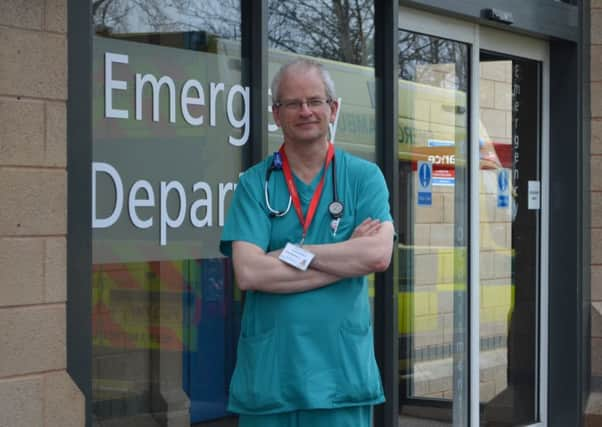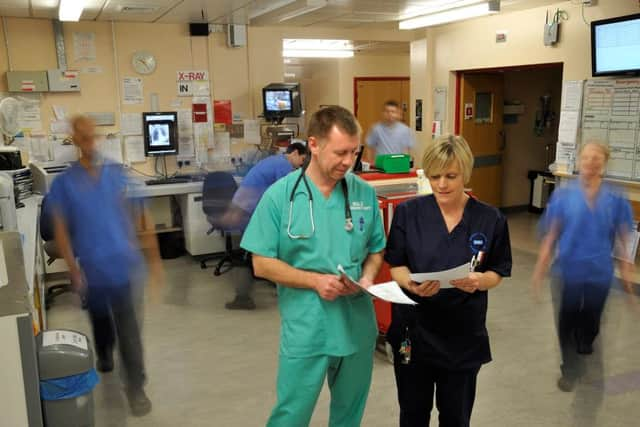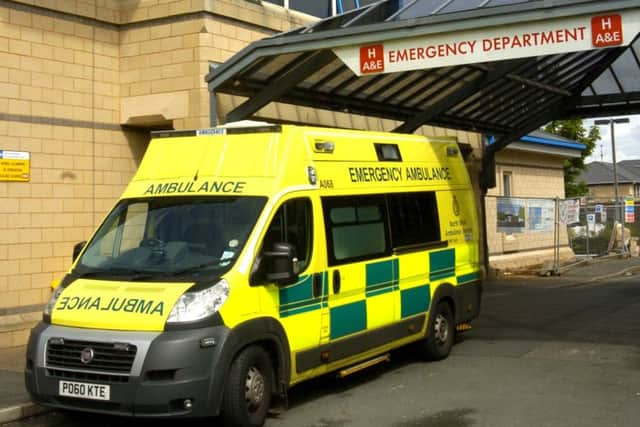RLI consultant: Fire getting too hot to handle in Lancaster A&E


Ray McGlone, lead consultant for emergency medicine at the Royal Lancaster Infirmary (RLI) knows better than most the pressures currently faced by the NHS.
He’s been working at the RLI for 26 years, and says over recent months the pressures on already overstretched staff are continuing to mount.
Advertisement
Hide AdAdvertisement
Hide AdThree times already this year, University Hospitals of Morecambe Bay NHS Trust (UHMBT) has issued statements warning people to stay away from A&E unless there is an absolute emergency.


But the numbers turning up are increasing – between January 1 and April 10 2016, 14,759 people visited, compared to 13,476 in the same period last year.
The Department of Health’s four-hour waiting target – where at least 95 per cent of patients attending an A&E department must be seen, treated, admitted or discharged in under four hours was 92.34 per cent between January and April 2015.
This year it is just 80.44 per cent.
The trust says that A&E is the barometer for the whole NHS and reflects the whole system pressures felt nationally.


Advertisement
Hide AdAdvertisement
Hide AdOn Sunday, April 10, 162 patients turned up at the emergency department, 63 of those by ambulance.
The problem, says Mr McGlone, is that once people arrive by ambulance, it’s very difficult to get them discharged.
He said: “It’s a busy time for A&E across the country.
“We’re blessed with a good GP service in the Lancaster district, the local population use the service appropriately, but there are always exceptions with people coming in with inappropriate conditions.


“People coming in with coughs and colds is pretty rare, but we do have a problem with some of the student population, although that’s mainly due to foreign students not understanding the NHS properly.
Advertisement
Hide AdAdvertisement
Hide Ad“The problems arise with the number of ambulance cases, and primarily because of exit blocking.
“Older people aren’t getting discharged into the community, and it’s filling the wards with people that could be in the community rather than in hospital. It’s like a log jam.”
Mr McGlone said that despite the country’s ageing population there has been a reduction in nursing home beds nationally.


“The commissioners are very much aware of it”, he said, “but it’s not an easy solution.
Advertisement
Hide AdAdvertisement
Hide Ad“In this area it’s the much trickier problem of exit block, everyone is aware of it, but everyone is scratching their heads.
“Every country with an ageing population has the same problem.”
Staffing is also an issue across the UK in emergency medicine.
“We’ve got hundreds of trained A&E doctors working in Australia and New Zealand,” said the consultant.
Advertisement
Hide AdAdvertisement
Hide Ad“We’re having patients coming to our departments, there are no hospital beds and the patients are ending up in A&E.
“When the NHS has something wrong with it the rash always comes out in A&E.
“The pressure is mounting and we’re having difficulty recruiting.” Mr McGlone said that at times A&E “feels like a war zone”, and that healthcare decision-makers could gain a lot of insight by spending a night with him in A&E.
A new health strategy for Lancashire and Cumbria – Better Care Together – is currently being developed, working across health and social care to enable better planning between organisations.
Advertisement
Hide AdAdvertisement
Hide AdThe plan seeks to work across health organisational boundaries to plan each stage of care, with aims to ensure patients spend less time waiting and enable them to return home with the right support in place.
Dr Alex Gaw, Clinical Chair for Lancashire North CCG, said: “There are currently severe pressures on our local health system, influenced by a number of factors and patients tell us they do not want to be in hospital longer than necessary.
“We need to be smarter with how our resources are used and our Better Care Together strategy has a number of projects at various stages of implementation which ultimately aim to provide more health care in the community, closer to patient’s homes.
benefit
“This will benefit the health system and more importantly it will benefit the patient.”
Advertisement
Hide AdAdvertisement
Hide Ad“Better Care Together is connecting health and social care providers across Morecambe Bay, a total of 11 organisations, with the aim of working differently for the benefit of local people.
“These changes do take time to implement and in the short-term there is additional capacity being created and staff are being mobilised to help ease the pressures in the system.”
Mr McGlone said that the trust’s recent messages are targeting the working population.
“It’s people in their 20s and 30s that are using it inappropriately,” he said.
“The truth is the fire is getting a bit too hot to handle.
Advertisement
Hide AdAdvertisement
Hide AdWhat I would say to people is that most patients and relatives understand the situation and are sympathetic.
“What makes it bearable for staff is the simple word ‘thanks’. It keeps us going.
“And also if people could spare some time to go and visit an elderly neighbour and check they’re okay, society would be in a much healthier place.”